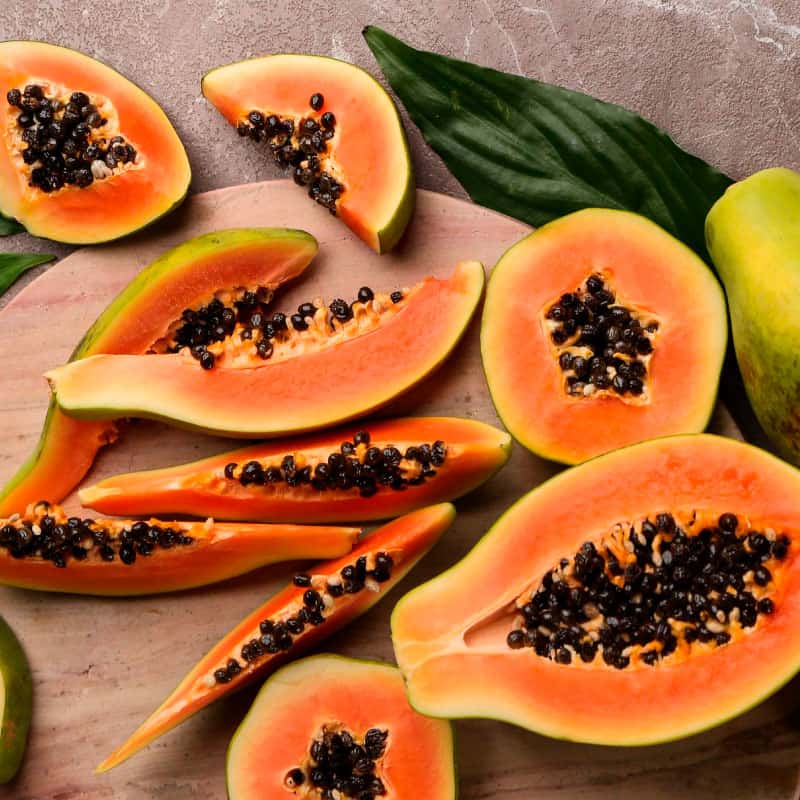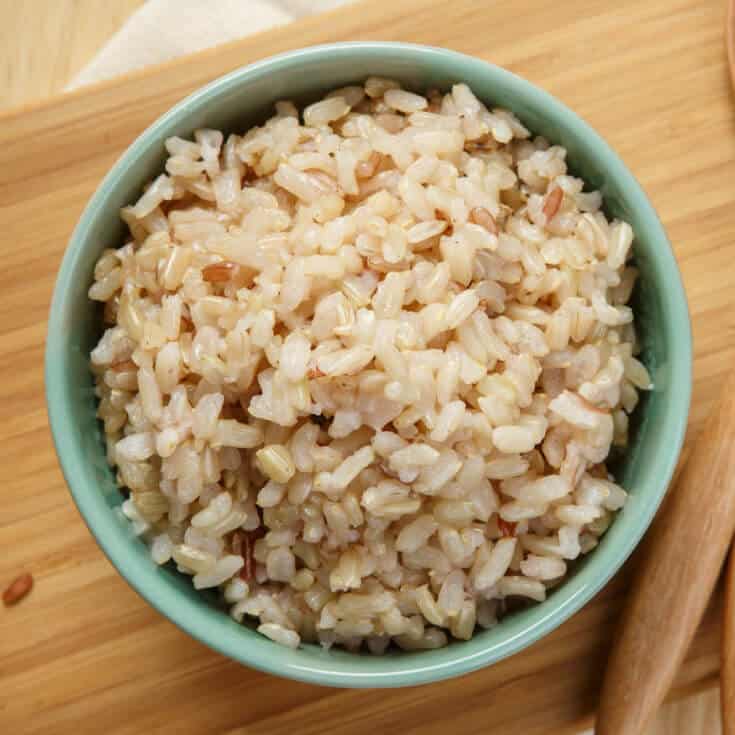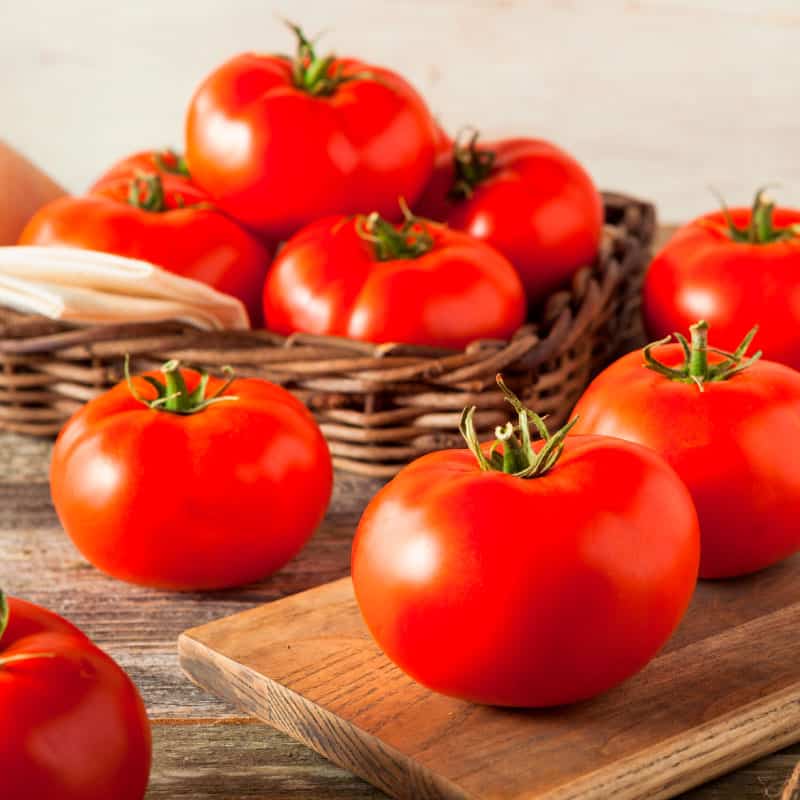This Dr. Axe content is medically reviewed or fact checked to ensure factually accurate information.
With strict editorial sourcing guidelines, we only link to academic research institutions, reputable media sites and, when research is available, medically peer-reviewed studies. Note that the numbers in parentheses (1, 2, etc.) are clickable links to these studies.
The information in our articles is NOT intended to replace a one-on-one relationship with a qualified health care professional and is not intended as medical advice.
This article is based on scientific evidence, written by experts and fact checked by our trained editorial staff. Note that the numbers in parentheses (1, 2, etc.) are clickable links to medically peer-reviewed studies.
Our team includes licensed nutritionists and dietitians, certified health education specialists, as well as certified strength and conditioning specialists, personal trainers and corrective exercise specialists. Our team aims to be not only thorough with its research, but also objective and unbiased.
The information in our articles is NOT intended to replace a one-on-one relationship with a qualified health care professional and is not intended as medical advice.
Plant-Based Diet: Disease-Protective + Promotes Major Weight Loss
Reviewed by Joel Kahn, MD
April 29, 2023
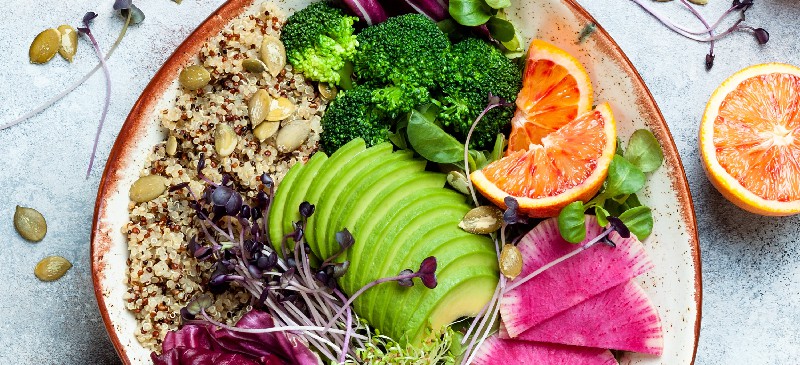
The plant-based diet continues to grow in popularity, and it can be beneficial for helping both children and adults to increase their nutrient intake while lowering excess or “empty calorie” intake. It’s been shown that plant-based diets (similar to vegetarian diets in many ways) offer protection against coronary heart diseases, metabolic syndrome risk factors, some cancers, obesity, hypertension, type-2 diabetes and cardiovascular mortality.
Eating more plants, especially veggies and fresh fruit, in place of things like processed meats and packaged products is said to be one of the most valuable things we can do to lose weight quickly and help reverse the growing obesity epidemic.
While this is a good reason to go plant-based — considering two out of every three American adults, and one out every three children is now overweight or obese — there are many other reasons to eat more plants, too. These include lowering your carbon footprint, spending less on groceries overall, supporting organic agriculture, reducing your risk for most chronic diseases, and much more.
What Is a Plant-Based Diet?
Plant-based diets are modern takes on many types of healthy traditional diets that relied on widely-available plant foods — including vegetables, fruits, starches like potatoes or corn, beans/legumes, nuts, seeds and healthy fats like whole coconuts or olives.
There isn’t necessarily one “plant-based diet” in existence today, but rather dozens of different variations that stem from cultures found all around the world. Examples of popular, mostly plant-based diets include: the Mediterranean diet (including the new Green Mediterranean diet, macrobiotic diet, vegan diet, Dean Ornish diet, raw food diet and various types of vegetarian diets.
Research done at the University of Oxford Cancer Research Center showed that in general, plant-based/vegetarian diets provide relatively high amounts of complex carbohydrates, omega-6 fatty acids, dietary fiber, vitamin C, vitamin E, magnesium and antioxidants such as carotenoids or folic acid. While a plant-based diet can be very healthy, it sometime takes some planning to make sure you’re getting enough long-chain omega-3 fatty acids, retinol, vitamin B12 and minerals like zinc.
Not ready to give up animal foods? That’s actually not a problem. Not every plant-based diet is vegan or even vegetarian. Many include quality animal foods, but aim to do so “in moderation” — it’s something taken in consideration when comparing plant-based diets vs. Paleo as well as Paleo vs. vegan diets. In other words, foods like meat, fish, eggs or dairy aren’t necessarily off-limits when you’re eating plant-based, they just usually take a back seat to eating lots of unprocessed plant foods. Aim to limit to less than 10 percent of your plate if selected.
How many plants can you expect to eat as part of a plant-based diet?
It all depends, since every plan and person is different. Some plant-based diets such as the Ornish Diet, the “80-10-10 Diet” and vegan diet are very high in carbohydrates (like veggies, fruit, beans and grains) but very low in fat and protein. Following these diets might mean you’re getting up to 60–80 percent of your daily calories from the carbohydrate macronutrient and as little as 10 percent from fats or proteins.
“When analyzed, some of the longest lived civilizations in the world like Okinawa, Japan eat a diet comprised of foods that are over 80 percent carbohydrate macronutrients,” says Joel Kahn, MD, a clinical professor of medicine at Wayne State University School of Medicine and author of The Whole Heart Solution. “As long as calories from carbohydrates are whole and unprocessed, such as oats, whole wheat, spelt, quinoa and rye, high amounts are favorable and associated with health.”
Other varieties, such as the DASH Diet or Mediterranean Diet, might be around 40–60 percent carbohydrates, but include more healthy fats and proteins.

Health Benefits
1. High in Anti-Inflammatory Foods
Chronic inflammation is now being tied to nearly every chronic disease there is, from leaky gut syndrome and arthritis, to cancer and heart disease. Anti-inflammatory foods help stop the progression of disease by supplying nutrients that fight oxidative stress (also called free radical damage) including:
- Antioxidants and phytonutrients (such as flavanoids, resveratrol, quercetin, beta carotene, and more)
- Essential vitamins such as vitamin C, E and A
- Trace minerals
- Electrolytes
- Essential fatty acids
Studies show that diets high in anti-inflammatory foods promote longevity, regulate the immune system, and impact the way inflammation affects our bodies and our lives. Plant foods can help foster better gut health, boost immune functioning and reduce autoimmune reactions that can cause a cascade of age-related diseases.
2. High in Fiber
Plants such as vegetables, seeds, ancient grains and legumes are high-fiber foods that are capable of lowering your risk for constipation, digestive problems, high cholesterol, heart disease and diabetes.
A high fiber diet helps to prevent cravings and overeating, keeps your arteries clear from plaque, and allows healthy probiotic bacteria to thrive in your GI tract. Soluble fiber slows down digestion and makes you full by attracting water and forming a gel-like substance, while insoluble fiber tends to speed up digestion by adding bulk to stool.
Some of the top high fiber plant foods to include in your diet? These include avocado, flax or chia seeds, berries, gluten-free oats, coconut, apples, cabbage, artichokes, figs or dates.
3. Can Help You Reach or Maintain a Healthy Weight
Research shows that plant-based diets are cost-effective, low-risk interventions that can help reverse adult and childhood obesity. Plant-based (or “mostly plant-based”) diets are tied to a lowered risk for obesity, lower BMI status and reduced complications related to obesity including heart problems or metabolic syndrome.
A 2013 study published in the European Journal of Clinical Nutrition found that an 18-week dietary intervention using a low-fat plant-based diet helped improve body weight, plasma lipids and glycemic control.
4. Lowers Your Risk for Chronic Diseases
Many populations living around the world that still eat “traditional diets” high in plant foods tend to suffer from far less chronic diseases overall than those eating modern Western diets do. In the world’s “Blue Zones” — where the highest percentage of people living over the age of 100 can be found — plant-based diets help to reduce the rates of heart disease, cancer, dementia, diabetes, osteoporosis and more.
The famous Lyon Diet Heart Study found that a Mediterranean-style, mostly plant-based diet could cut heart attacks and death rates due to heart disease by 70 percent compared with a traditional American Heart Association diet. Other research has shown that plant-based diets can significantly help lower body mass index and high obesity rates, high blood pressure, high triglyceride and cholesterol levels, diabetes risk and more.
Plant foods that are commonly eaten in the healthiest parts of the world? These include: leafy green veggies, fresh herbs and spices, tropical fruits like mangoes and pineapple, nuts and seeds (almonds, walnuts and cashews, for example), corn and ancient grains, olive oil, beans and sweet potatoes.
5. Good for the Environment
Not only does a plant-based diet have benefits for your waistline and health, it’s also good for the planet. Eating foods that are “lower on the food chain” takes less natural resources to produce, has a lower carbon footprint, spares the lives of livestock, and reduces food scarcity globally.
According to a report in the American Journal of Clinical Nutrition, manufacturing animal foods requires a higher proportion of water, land, fossil fuels and energy than most plant foods do. So if everyone were to even cut back their intake of animal foods in favor of eating more plants, it could have far-reaching positive effects.
Plant-Based Diet vs. Vegan Diet
- Vegan diets are 100 percent plant-based, meaning they include no animal products at all and strictly exclude all meat, fish, dairy and eggs. Plant-based diets, on the other hand, are usually more varied and tend to include at least some animal foods, such as dairy, eggs or fish.
- Vegan diets are gaining more and more popularity, especially among younger people and those looking to lose weight.
- However, there are some concerns regarding nutrient deficiencies associated with vegan diets, including deficiencies in protein, calcium, iron, essential fatty acids such as omega-3s, and vitamin B-12 (which is only found in animal foods) and plant foods supplemented with B12.
- Vegan diets have been linked to lower risk for obesity and prevention against certain diseases like diabetes. That being said, you don’t need to go 100 percent plant-based to see positive health effects.
- A 2014 study that appeared in the journal Nutrients compared the nutritional quality of vegan, vegetarian, semi-vegetarian, pesco-vegetarian (Pegan diet) and omnivorous diets and found that vegan diets (100 percent plant-based) were actually too low in certain nutrients such as calcium, while vegetarians, semi-vegetarians and pesco-vegetarians has “better nutrient quality” overall.
- So should you consider being a vegan or vegetarian? Vegan diets can have benefits according to some people, including being low in calories, total fat (saturated and mono-unsaturated fat), dietary cholesterol, dietary proteins, alcohol and sodium.
- However, studies consistently show that vegans are more likely to be low in certain nutrients, too, and might not easily consume enough calories overall. People react differently to various diets, so it’s ultimately up to you decide what type of plant-based diet might be most appropriate.
Best Plant-Based Foods
The healthiest healing foods to include in a plant-based diet include:
1. Vegetables
Vegetables (and usually fruit, too) are the cornerstone of most plant-based diets, so it’s always recommended that you aim to eat an abundant variety. Usually “the more the better” when it comes to fresh veggies, especially if you incorporate raw veggies into your meals.
Vegetables are nutrient-dense, low in calories, full of antioxidants, and tied to protection from weight gain, type 2 diabetes, heart disease, and other chronic disorders.
2. Fresh Fruit
Aim for eat 1–3 pieces of whole fruit (not juice) every day. Fruit is low in calories but full of fiber, antioxidants, vitamins and water. Some of the best choices include berries, kiwi, melon and tropical fruits.
3. Healthy Fats
Healthy oils include virgin olive or coconut oil (except for those with heart disease where it is recommended to avoid coconut oil), palm oil, hemp, sesame, flax and avocado oil. Nuts, seeds, coconut milk and avocado are also good sources of plant-based healthy fats that help control your appetite and have many other benefits for reducing inflammation.
4. Whole Grains
Unprocessed grains are a good source of fiber and some minerals, but are best in moderation. Whole grains include 100 percent whole/unprocessed quinoa, oatmeal, brown or wild rice, millet, barley, amaranth, buckwheat, farro and so on.
Most packaged wheat products and processed grains used to make things like bread, cakes, cookies, etc. should be avoided since these are pro-inflammatory, low in nutrients, and can contribute to problems like weight gain or type 2 diabetes.
5. Healthy Proteins
Although plants might take center stage, high-protein plant foods are also important for giving you energy, retaining muscle mass, and much more. Many people may eat only peas, beans and lentils as their primary protein source and demonstrate superior health.
Meanwhile, some may choose to consume proteins such as wild-caught fish, pasture-raised poultry, grass-fed beef and cage-free eggs as less than 10 percent of their calories. Nuts and seeds are also recommended for protein.
6. Water and Unsweetened Drinks
To consume enough fluids and stay hydrated, drink plain water, tea, or coffee in moderation. Avoid sweetened drinks, most juices, most conventional milks, sweetened teas, and too much alcohol or caffeine.
How to Follow a Plant-Based Diet
Plant-based diets are usually lower in calories than diets that are high in processed animal products and packaged goods (especially ultra-processed foods) are. However, you don’t need to count calories to eat a healthy diet — instead, think in terms of portions and approximate servings.
Calorie needs vary from person to person, so it’s important to pay attention to your hunger/fullness cues — something called mindful eating. In addition to eating more plants, keep an eye on portion sizes and aim for balance and variety overall.
Try visualizing your plate and filling about one-third to one-half of your plate with fresh veggies and/or fruit at every meal. The remainder should be split between healthy fats and healthy proteins, with moderate amounts of whole/unprocessed grains.
One helpful way to begin eating a plant-based diet is to follow an example of the “Healthy Eating Plate” illustration created by Harvard Medical School.
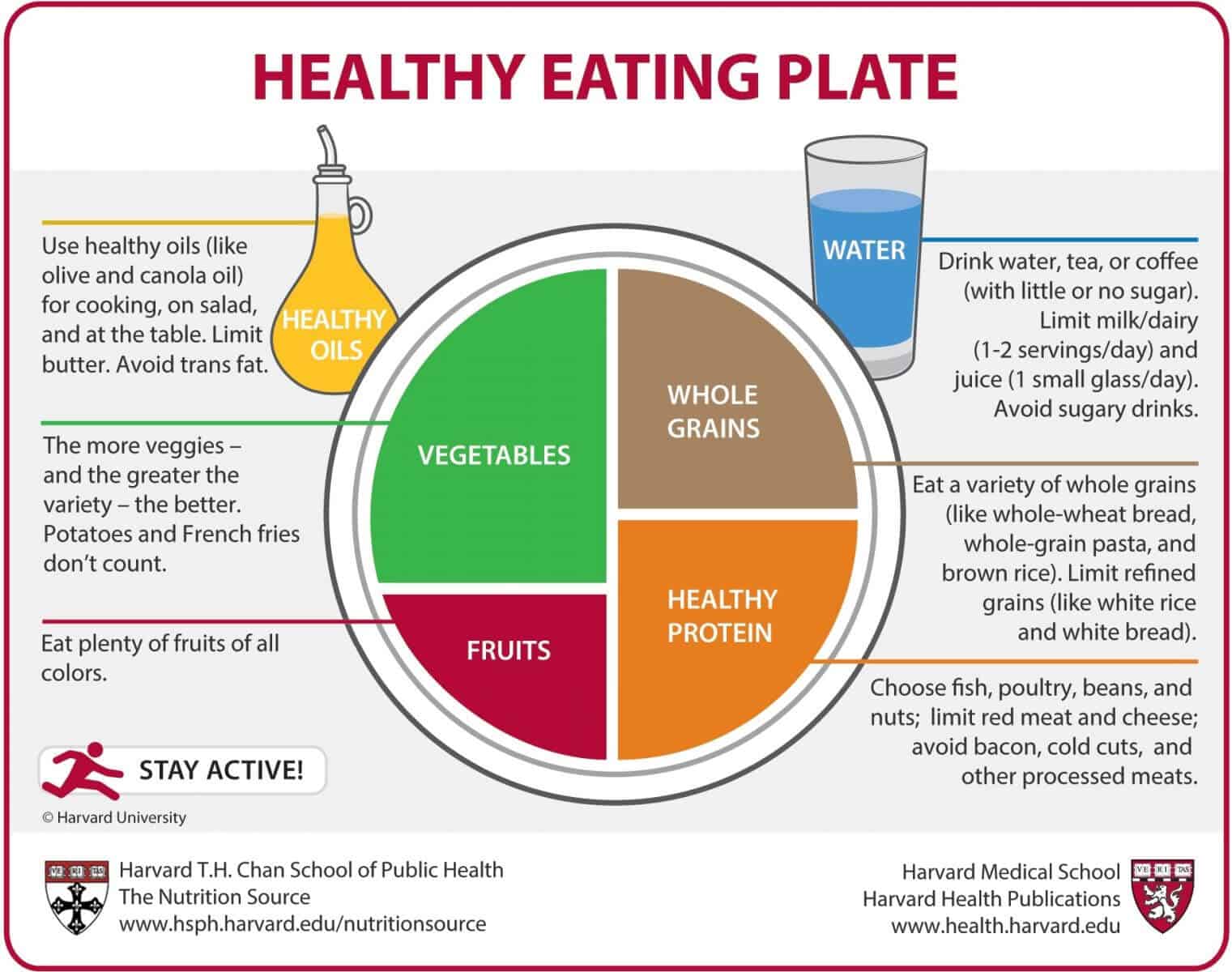
Graphic courtesy of http://www.health.harvard.edu/plate/healthy-eating-plate/
Their plate visual can help you learn how to put together a healthy meal that fits within the guidelines below, but still offers room for interpretation and individual preference.
Here are more tips for following a healthy plant-based diet:
- Just because something is supposedly mostly made of plants, doesn’t mean it’s actually healthy! As much as possible avoid foods that might be vegetarian or vegan but are still unhealthy. These include packaged meat-alternative products, sweetened drinks, refined grains/flour products, synthetic ingredients, processed soy, refined vegetable oils and sweetened dairy products.
- Not all plant based diets are equal in terms of their health benefits. The key to eating a plant-based diet is to reduce processed/packaged foods. Studies have found that eating a healthy version of a plant-based diet is linked with a 34 percent lower diabetes risk, but a less healthy version (one high in things like refined grains, potatoes, and sugar-sweetened beverages) actually increases diabetes risk by around 16 percent.
- Try to include vegetables, either cooked or raw with most meals. Aim to have 4–6 different kinds every day if you can, and “eat the rainbow” so you’re varying your nutrient intake.
- Some experts recommend that you consider potatoes more of a starch rather than a vegetable. So while a baked potatoes (not french fries or packaged potato products!) can be a healthy choice, it’s a good idea to limit your consumption of them if you’re trying to lose weight or have problems managing your blood sugar.
- Choose 100 percent whole grains, also sometimes called “ancient grains,” whenever possible over processed grains or flour products. Eating grains in moderation and in whole form is superior to eating things like bread, cereals or pasta because whole grains are digested more slowly and don’t have the same roller-coaster effect on blood sugar levels as refined grains do. Try to keep your portion of grain products to no more than 1/4 of your plate, and ideally limit your consumption overall to 1–2 servings per day.
- Drink enough water throughout the day to prevent dehydration and hunger pangs. Keep in mind that too many caffeinated drinks might make you feel jittery and hungry, and that alcohol can also increase your appetite and cravings.
Risks and Side Effects
In addition to eating more plants for your health, it also makes sense to do things like exercise, sleep well, and reduce stress through activities like yoga, meditation, prayer, etc.
- Most plant-based diets have roots in cultures that also emphasize the importance of mind-body practices and stress-relieving techniques. For example, traditional diets stemming from places like China and Japan are one part of a larger picture of “holistic health.”
- In other words, eating more plants is important for reducing inflammation and boosting your odds of living a long, healthy life. But plant-based diets are most effective when they are viewed as one piece of the larger puzzle.
In addition, remember that healthy fats and proteins are also important parts of a balanced diet, too.
- If you notice that you’re tired, frequently hungry and craving things like sweets, it ‘s probably a good idea to include more protein and healthy fats in your meals since this can be a sign of blood sugar fluctuations or protein/fat deficiency.
- Surges in blood sugar and insulin usually lead to hunger and overeating in the long-term, sometimes causing weight gain and hormonal imbalances, too, so keep an eye out for these symptoms.
Final Thoughts
- There are many different types of plant-based diets eaten around the world today, however most have in common limiting animal foods in favor of eating more fruits, vegetables, tubers, whole grains, legumes and healthy fats.
- Benefits of eating more plants, along with eating less meat, dairy products, packaged foods and sugary snacks, include protection against obesity, weight gain, heart disease, diabetes, autoimmune disorders and metabolic syndrome.
- Plant-based diets are different from vegan diets, and even vegetarian diets, because they often include some high-quality animal products eaten in moderate amounts.
- Some tips for eating a balanced plant-based diet include upping your veggie intake, reducing your intake of meat alternative products, lowering your sugar intake, and skipping refined grain products.



